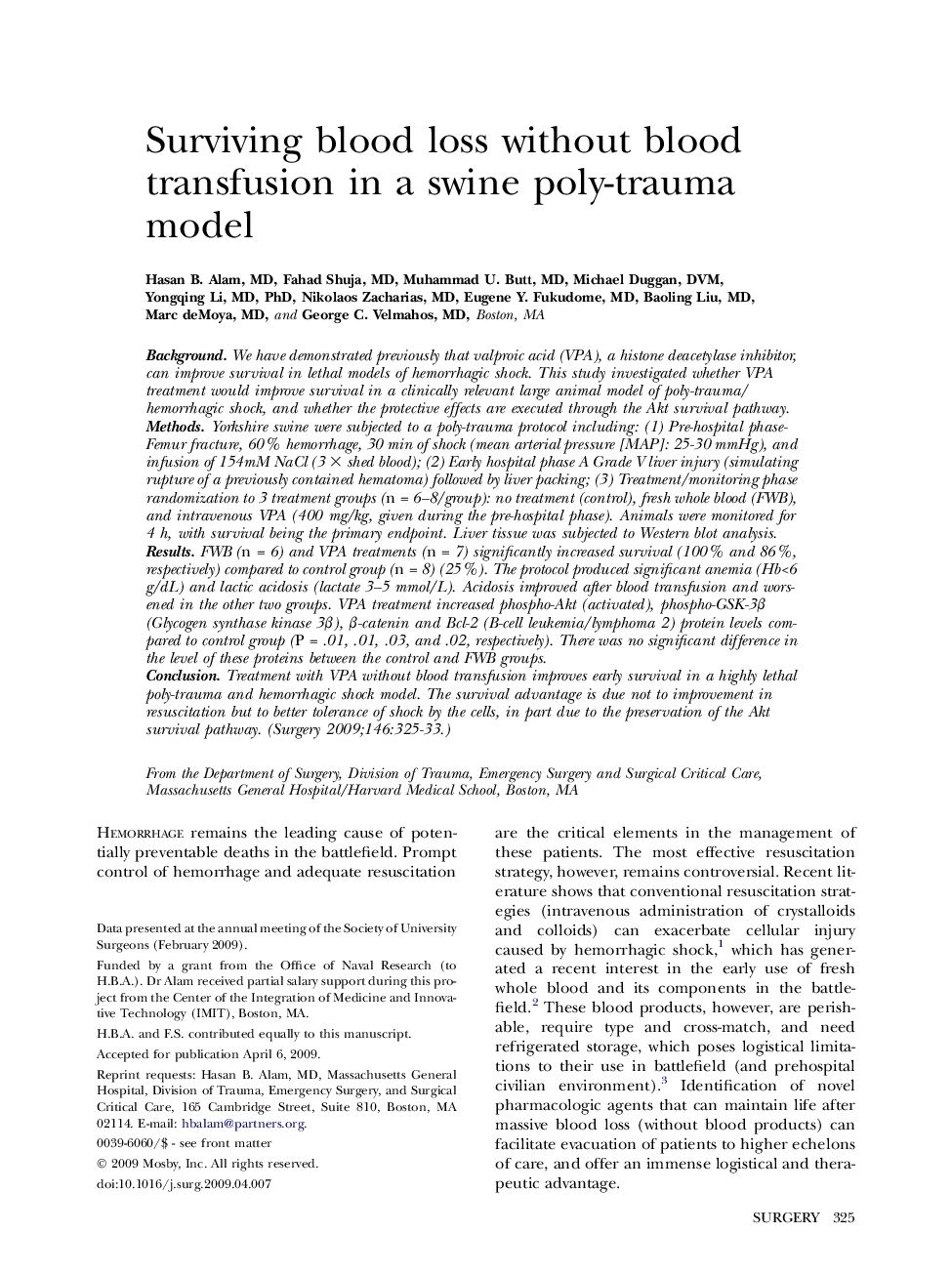| کد مقاله | کد نشریه | سال انتشار | مقاله انگلیسی | نسخه تمام متن |
|---|---|---|---|---|
| 4309400 | 1289310 | 2009 | 9 صفحه PDF | دانلود رایگان |

BackgroundWe have demonstrated previously that valproic acid (VPA), a histone deacetylase inhibitor, can improve survival in lethal models of hemorrhagic shock. This study investigated whether VPA treatment would improve survival in a clinically relevant large animal model of poly-trauma/hemorrhagic shock, and whether the protective effects are executed through the Akt survival pathway.MethodsYorkshire swine were subjected to a poly-trauma protocol including: (1) Pre-hospital phase- Femur fracture, 60% hemorrhage, 30 min of shock (mean arterial pressure [MAP]: 25-30 mmHg), and infusion of 154mM NaCl (3 × shed blood); (2) Early hospital phase A Grade V liver injury (simulating rupture of a previously contained hematoma) followed by liver packing; (3) Treatment/monitoring phase randomization to 3 treatment groups (n = 6–8/group): no treatment (control), fresh whole blood (FWB), and intravenous VPA (400 mg/kg, given during the pre-hospital phase). Animals were monitored for 4 h, with survival being the primary endpoint. Liver tissue was subjected to Western blot analysis.ResultsFWB (n = 6) and VPA treatments (n = 7) significantly increased survival (100% and 86%, respectively) compared to control group (n = 8) (25%). The protocol produced significant anemia (Hb<6 g/dL) and lactic acidosis (lactate 3–5 mmol/L). Acidosis improved after blood transfusion and worsened in the other two groups. VPA treatment increased phospho-Akt (activated), phospho-GSK-3β (Glycogen synthase kinase 3β), β-catenin and Bcl-2 (B-cell leukemia/lymphoma 2) protein levels compared to control group (P = .01, .01, .03, and .02, respectively). There was no significant difference in the level of these proteins between the control and FWB groups.ConclusionTreatment with VPA without blood transfusion improves early survival in a highly lethal poly-trauma and hemorrhagic shock model. The survival advantage is due not to improvement in resuscitation but to better tolerance of shock by the cells, in part due to the preservation of the Akt survival pathway.
Journal: Surgery - Volume 146, Issue 2, August 2009, Pages 325–333